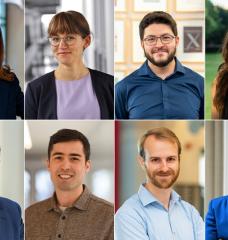
Lauren Hinkel | EAPS News
Friday, May 1, 2020
The esteemed academy honored him for his work on atmospheric physics and dynamics of tropical weather patterns.
Read this at MIT News
Kerry Emanuel, Cecil and Ida Green Professor of Atmospheric Science in MIT’s Department of Earth, Atmospheric and Planetary Sciences (EAPS), is among 62 exceptional scientists elected as Fellows, Foreign Members, and Honorary Fellows of the Royal Society this year. The independent academy of learned individuals, located in the United Kingdom, identifies and supports excellence in science, as well as encourages the development and use of research for the betterment of society. This cohort of UK and international members includes Nobel laureates, industry leaders, innovators, and science policy experts.
“While election to the Fellowship is a recognition of exceptional individual contributions to the sciences, it is also a network of expertise that can be drawn on to address issues of societal, and global significance,” said President of the Royal Society Venki Ramakrishnan in a statement. “This year’s Fellows and Foreign Members have helped shape the 21st century through their work at the cutting-edge of fields from human genomics, to climate science and machine learning.”
Emanuel, who is also co-director of the Lorenz Center in EAPS, has spent his career understanding atmospheric dynamics. His research focuses on mesoscale and tropical weather systems, as well as the role of moist convection and ocean-atmosphere interactions in Earth’s climate system. Through basic, curiosity-drive research and using theory and climate modeling, he has contributed to the field’s understanding of rain and snow bands in winter storms, and the effect of phase change of water on fronts and cyclones. His work on the physics of tropical cyclones — their genesis particularly in the tropics, environmental controls on their intensity, and their trends over time — has garnered significant interest from all sectors around the globe. The Royal Society remarks that “he has brought physical modeling to bear on the quantification of long-term hurricane risks and was the first to predict that hurricanes would become more intense as the climate warms.” He has championed communication and policy to help avoid some of climate change’s more devastating effects while emphasizing economic opportunities in doing so.
Emanuel earned his bachelor’s degree in 1976 and PhD from MIT in 1978 in meteorology; he later joined the MIT faculty in 1981. He is a member of the National Academy of Sciences, the American Academy of Arts and Sciences, and the American Philosophical Society.
Since its founding in the 1660s, the Royal Society has selected around 1,600 of the world’s leading scientists as Fellows and Foreign Members. This includes Isaac Newton, Charles Darwin, Albert Einstein, Dorothy Hodgkin, and Stephen Hawking, whose contributions to science have helped propel knowledge forward. Several current and former MIT Course XII alumni and faculty can also be counted among these ranks: R. Alan Plumb (1998), Inez Fung (2019), John Marshall (2008), Susan Solomon (2008), Roger Summons (2008), Carl Wunsch (2002), and Marcia McNutt (2017).
“At this time of global crisis, the importance of scientific thinking, and the medicines, technologies and insights it delivers, has never been clearer. Our Fellows and Foreign Members are central to the mission of the Royal Society, to use science for the benefit of humanity,” said Ramakrishnan.





